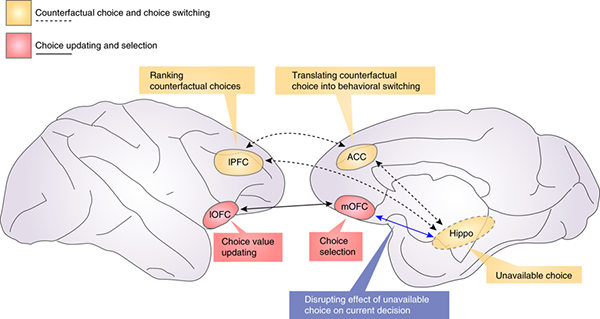A collaborative research team from Oxford University and France’s National Institutes of Health and Medical Research (INSERM) have successfully used focused ultrasound neuromodulation to affect the memory behavior of macaque monkeys. As recently published in Nature Neuroscience, the teams – led by Jerome Sallet and Matthew Rushworth at Oxford’s Wellcome Integrative Neuroimaging laboratory in the Department of Experimental Psychology and Jean-Francois Aubry at Physics for Medicine Paris laboratory (INSERM, ESPCI, CNRS, PSL Research University) – designed and carried out experiments to test whether focused ultrasound could be used to determine which region of the brain influences decision making.
 “This research is important because it demonstrates that focused ultrasound can induce long-lasting neuromodulation effects in deep-seated areas of the brain in awake behaving animals. Modulation of brain connectivity was assessed by functional MRI, and its impact on the behavior of the animal was evaluated as well,” said Dr. Aubry. “If translatable to humans, it would be instrumental in achieving one of the most important goals in neuroscience: to map the human brain.”
“This research is important because it demonstrates that focused ultrasound can induce long-lasting neuromodulation effects in deep-seated areas of the brain in awake behaving animals. Modulation of brain connectivity was assessed by functional MRI, and its impact on the behavior of the animal was evaluated as well,” said Dr. Aubry. “If translatable to humans, it would be instrumental in achieving one of the most important goals in neuroscience: to map the human brain.”
The manuscript describes behaviors “guided by internal representations of choice values that have to be maintained even when these choices are unavailable.” The regions of the brain that control these mechanisms were of interest to the research teams, so they created a simple paradigm to separate and distinguish the roles of each area of the brain that might be responsible for the behavior.
Using functional magnetic resonance imaging (fMRI), the scientific teams found two different patterns of activity across the hippocampus involving the anterior lateral prefrontal cortex and the anterior cingulate cortex. The researchers discuss their work and findings in the article “The Macaque Anterior Cingulate Cortex Translates Counterfactual Choice Value into Actual Behavioral Change,” published in Nature Neuroscience.
“In this study, ultrasound stimulation is completing an fMRI study. We applied the same stimulation protocol as in our previous paper but in awake behaving animals in order to test the role of the anterior cingulate cortex in reward-guided decision making,” said Dr. Sallet. He added, “We are excited to be capturing the attention of the neuroscience community; two high-impact journals, Proceedings of the National Academy of Sciences and Nature Reviews Neuroscience, published commentaries on our work.”
Importantly, this article is the most recent of a series of three articles published this year by the same teams (Verhagen et al., eLife, Feb 2019; Folloni et al., Neuron, March 2019; and Fouragnan et al., Nature Neuroscience, April 2019.)
“I am thrilled to see similar long-lasting effects in different animals and in different research centers induced by the same transcranial ultrasound stimulation (TUS) set-up,” said Dr. Aubry. “TUS is rapidly gaining momentum throughout the world, and the results are now very convincing. I am confident it will become a major tool in the neuroscience armamentarium to better understand the brain and to better treat patients.”
“This is a really exciting study for two main reasons,” lead author Elsa F. Fouragnan, PhD, a researcher in the School of Psychology at the University of Plymouth in the UK, said in a prepared statement on the university’s website. “Firstly, because we discovered that the cingulate cortex is crucial to help switch to better alternatives, and secondly, because low-intensity ultrasound can be used to reversibly change brain activity in a very precise part of the brain.”
Fouragnan added that this imaging technique, called ultrasound neurostimulation, could “improve the lives of millions of patients with mental health conditions by stimulating brain tissues with millimeter accuracy.”
“Presently, neuromodulation techniques do exist for humans, to help people with conditions such as major depression or Parkinson’s,” she said, “but there are no techniques that have this level of accuracy while remaining noninvasive.”
News Coverage of this Study
Stimulating Brain with Ultrasound Can Influence Decisions | Medical News Today
Scientists Change Monkey Minds Using Low-intensity Ultrasound | New Atlas
New Imaging Technique Changes Brain Activity, Could Help Millions of Mental Health Patients | Radiology Business
